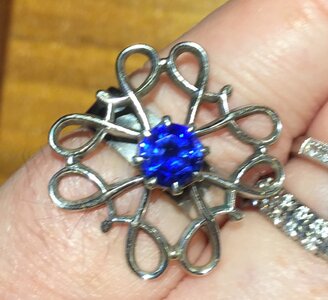VeryUndecided
Shiny_Rock
- Joined
- Mar 1, 2020
- Messages
- 164
Cornflower blue is subjective in the trade. I’ve seen everything from medium dark vivid blue to pale denim blues called cornflower blue. If there’s a color you like or want to see a trade ideal color, people can post examples. I’m very biased against vague metaphors to describe color.
I think many of us even disagree on what is considered lavender, so you may see lots of subjective opinions on cornflower blue here.

Just look a the 64 count box of Crayola Crayons.
Just wondering, does anyone have real-life photos of true Cornflower Blue Sapphires? I wonder what they look like under different light conditions.
It would be so nice if we have some sort of replicable, dependable color scale for sapphires. Kind of like hexadecimal color codesAs it is everybody interprets the name of a color in their own way and (judging from photographs) "Cornflower Blue" encompasses a big variety of blue tones.
I am just a customer. If a color scale was possible with diamonds, why not with sapphires? Wouldn't that make things easier for everybody?

AGL has developed the color codex, it’s their proprietary attempt at doing exactly what your describe
I don’t have any experience with it but apparently it is very easy to use, even for people who are not familiar with it.
The only downside is that it costs 2’000 US$ so it’s either for the trade or for serious collectors.

ColorCodex
www.color-codex.com
I'm not sure if it's already been said or not & I missed it but what will make this conversation continue on in a neverending pursuit is the fact that color is not objective. The way we all process color & see it can be different as well. Actually quite interesting but is a bit futile!
Over the years I learned what clients see as nice deep blue is nearly black and boring for me.
What is designated in this graph posted above as “cornflower blue” looks far too grey to me. As TL said above I doubt you’ll get an agreement on what us right or wrong. For me, cornflower blue has a slight touch of lavender or purple but not grey. The photo below gives an indication of the colour I would look for.